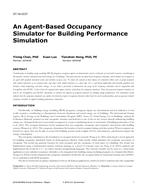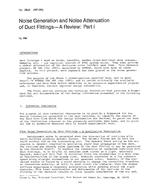Phase change materials (PCMs) are now well-known as potential additives to building insulation to provide a thermal masseffect to help conserve energy and maintain comfortable temperatures. There are many PCMs available, with phase changetemperatures covering a wide range of applications;however, the performance envelope of mostPCMsover time is not well known.For example, PCMs may lose energy storage capacity at temperatures at which phase transitions occur or may change due tochemical and physical transformations over many cycles of use. In this paper we are simulating long–term use of selected PCMsby laboratory testing in a thermal cycling chamber where temperatures are varied over the PCM samples’ transition temperatureranges every 90 minutes.PCMsamples being tested include: (1) encapsulated octodecane, (2) un-encapsulated mixtures of palmoiland soy oil, and (3) samples of core materials excised from PCM panels. PCMs samples are removed from thermal cyclingat two week intervals and differential scanning calorimetry (DSC) analysis is conducted to determine any degradation in thermophysicalproperties including melting point, heat of fusion, specific heat capacity, melting onset, and melting peak transitionrange. All PCM samples tested will be subjected to 5,400 cycles during the one-year long experiment to simulate 20 years of usein buildings. This research is expected to result in an accelerated aging methodology that allows reliable prediction of long-termPCM performance.
Presented at Thermal Performance of Exterior Envelopes of Whole Buildings XII, December 2013
Citation: Thermal Performance of Exterior Envelopes of Whole Buildings XII
Product Details
- Published:
- 2013
- Number of Pages:
- 9
- File Size:
- 1 file , 2.5 MB
- Product Code(s):
- D-BldConf13-35


